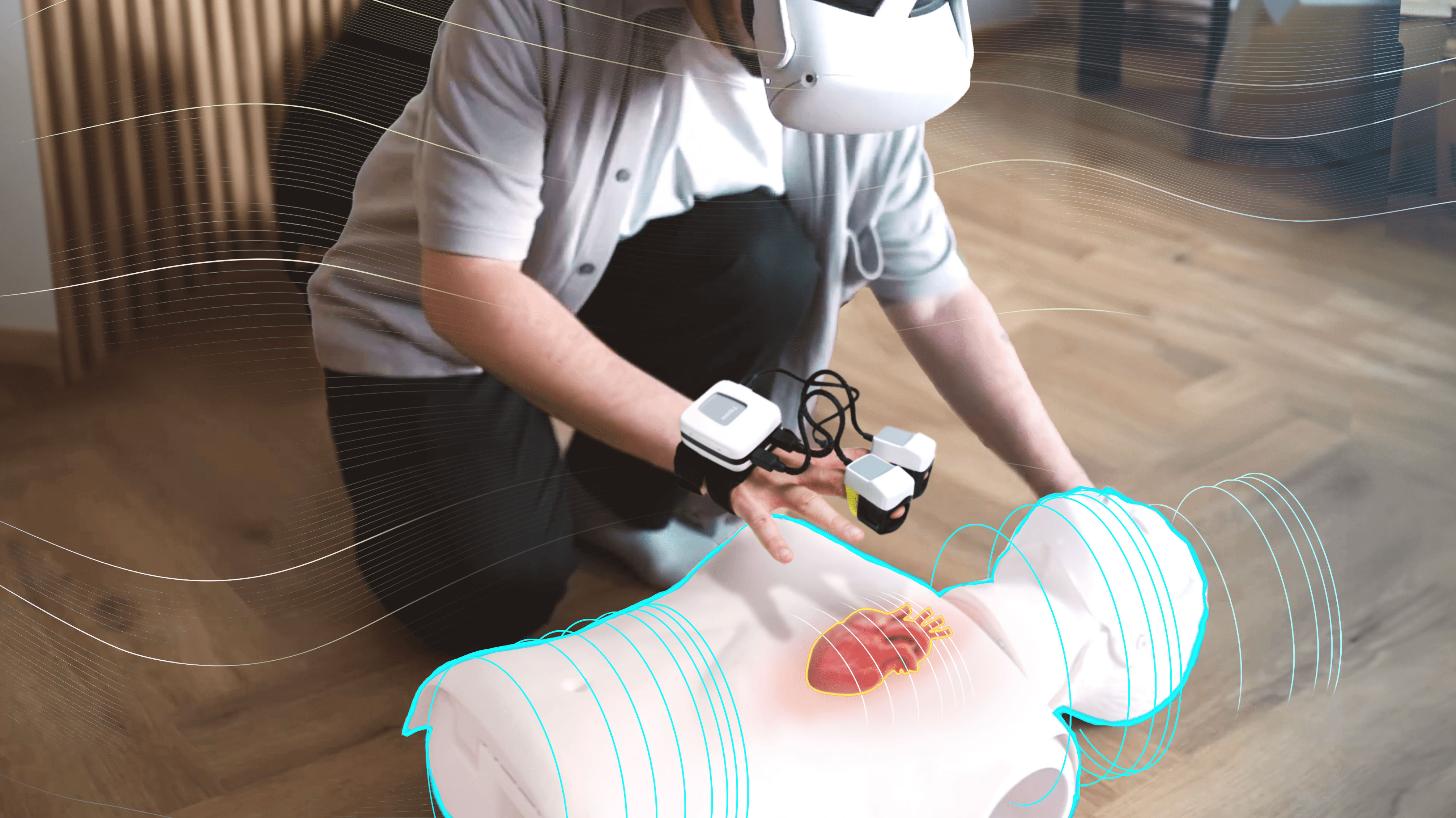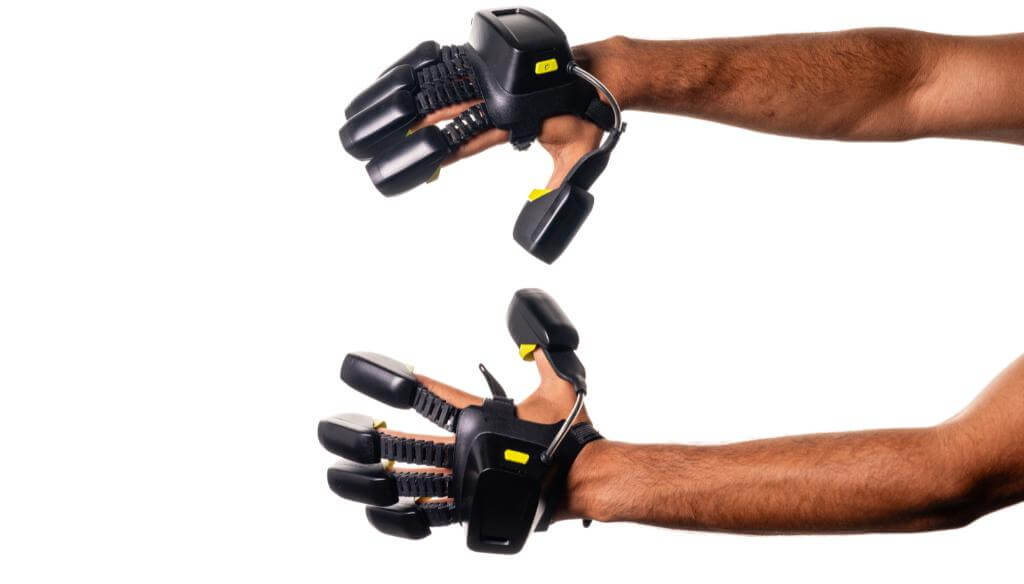
Emergency Room (ER) and Emergency Medical Services (EMS) training
Emergency medicine requires highly skilled professionals who can make quick, accurate decisions in high-pressure situations. To address this critical need, VR technology combined with haptics has emerged as a groundbreaking solution for Emergency Room (ER) and Emergency Medical Services (EMS) training.
TouchDIVER haptic gloves

Immersive medical training with haptic gloves
Extendend reality simulations for emergency responders
XR content creators and companies can develop a mixed-reality and virtual reality simulation platform that combines VR technology with TouchDIVER haptic glove. Trainees are placed in a chaotic emergency room, triaging and treating patients with different injuries while managing limited resources. The haptic gloves allow trainees to touch and interact with virtual patient, helping emergency responders develop crucial teamwork, communication, and decision-making skills in high-stress situations.
A tactile dimension for VR medical procedures
LIFELIKE INTERACTIONS
By naturally using their hands, trainees feel virtual procedures for real. TouchDIVER wearable device allows trainees to sense virtual tissues, instruments’ pressure, resistance, and the feeling that the body’s anatomy creates on surgical instruments.
REDUCE LEARNING CURVES
This enhanced realism improves trainees’ productivity by facilitating better hand-eye coordination, dexterity, and precision. They can practice delicate operations and master surgical techniques, reducing the learning curve.

